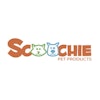
While pet food is exempt from a new US law mandating the labeling of GMOs (genetically modified organisms) in food products nationwide, the legislation could provide a strong framework for pet food companies wishing to voluntarily comply in the interest of transparency. It may also help boost pet food and treat products that are proven to not contain GMOs.
Signed into law by President Barack Obama on July 29 after quick passage by both houses of US Congress earlier in the month, the legislation requires the US Department of Agriculture (USDA) to determine which food products and ingredients should be labeled as containing GMOs, using text, symbols or bar codes that can be scanned with smartphones. USDA has two years to develop the rules and regulations for the program.
After being proposed in the Senate by a bipartisan agricultural committee, the law was passed by the full Senate on July 6, then the House of Representatives on July 14. This was surprisingly swift, not only because the US Congress is not known for moving quickly or, lately, for passing any legislation at all; but also because a year ago, the House had passed a very different GMO bill, calling for voluntary labeling.
Yet legislators were motivated to move because of a similar law that went into effect in Vermont on July 1. Many powerful groups involved with human food, such as the Grocery Manufacturers Association, pushed for a nationwide standard and law to preempt not only the Vermont law but also other state versions being drafted, to prevent a costly, confusing patchwork of different regulations and standards.
Pet food and animal feed organizations supported a nationwide law, too, mainly for the same reason. “The marketplace won’t experience undue, costly disruption,” said Cathy Enright, PhD, president and CEO of the Pet Food Institute (PFI), in addressing the advantages of the new legislation.
“Federal preemption of existing state laws and future attempts by states to implement similar laws was AFIA’s primary goal, and we’re very pleased it was fulfilled,” said Leah Wilkinson, VP of legislative, regulatory and state affairs for the American Feed Industry Association (AFIA).“The animal food industry is satisfied with the final outcome of the law. Congress affirmed its intent that mandatory disclosure of ways to determine if genetically engineered ingredients are used in food products apply only to food for human consumption.” She also noted that the Vermont law, as well as other state laws, had also exempted pet food.
Meeting consumer demand for transparency
Yet that doesn’t preclude pet food companies from using the federal law to disclose the presence of GMO ingredients in their products voluntarily. Why would any pet food makers choose to do that? Consumers are clamoring for full transparency in terms of the ingredients, sources and processes behind the foods they’re buying for themselves and their pets. I have heard several people in the industry speculate this is the main reason behind the class action lawsuits against pet food companies over labeling and ingredient sourcing (for example, fish obtained from Southeast Asia, where the fish trade has been accused of slavery).
“Consumers seeking information about the presence of GMO ingredients in human food will have access to consistent, standardized information,” Enright said, citing another benefit of the new legislation. There’s good reason to believe consumers will appreciate that advantage and information for pet foods, too, and the new law will build a framework for it.
“Once the rules are finalized, pet food manufacturers applying on-package language, symbols or QR codes (or other information for consumers, as desired) will have specific instructions for doing so,” Wilkinson said.
Pet food companies could also follow the blueprint developed by large human food companies such as Campbell Soup Co. and Mars (parent company of Mars Petcare) to voluntarily disclose GMO ingredients in their products. Programs like Cambell’s WhatsInMyFood.com represent a deliberate, proactive approach to meet consumer demand and put these companies well ahead of others in terms of complying with the new law.
Non-GMO products may benefit, too
On the flip side, because the new law will likely lead to many more human food (and possibly some pet food) products disclosing the presence of GMO ingredients on their labeling, it could help products labeled as non-GMO stand out. Pet food products that have earned certification under the Non-GMO Project or the USDA National Organics Program (which requires proof of no GMOs in the product) are already proving more and more popular with consumers. In 2015, 9% of cat owners and 10% of dog owners in the US purchased treats labeled non-GMO, and 15% of cat owners and 21% of dog owners said they had purchased organic pet treats, according to Packaged Facts.
To clarify, lack of a GMO declaration does not mean a product can automatically be labeled non-GMO. “The law explicitly states just because your product does not contain some sort of disclosure, a company cannot claim its product is ‘non-GMO,’” Wilkinson explained. “Only USDA certified organic products will be allowed to make that claim.” She added that existing market programs such as the Non-GMO Project are not affected by the law.
That still leaves many products that can make non-GMO claims, with the number growing. “Today, for those who wish to purchase pet food and treat products made with non-GMO ingredients, the choices are plentiful,” said Enright, who also praised the new law for respecting the science regarding GMO safety. “If customers have questions about GMO ingredients, PFI companies welcome their inquiries.”


















